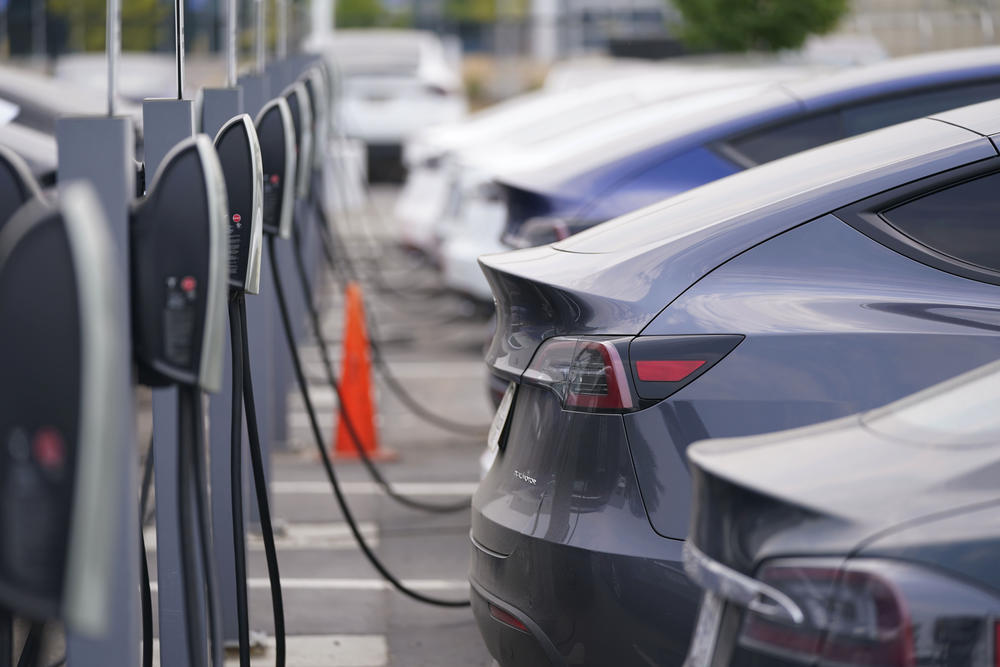
Caption
As electric vehicles take up an increasing share of the road, first responders must learn how handle emergencies involving them.
Credit: AP Photo/David Zalubowski
As electric vehicle sales rise in Georgia, first responders are learning how to handle the new technology in an emergency. GPB’s Amanda Andrews explains.

As electric vehicles take up an increasing share of the road, first responders must learn how handle emergencies involving them.
As more electric vehicles hit the road in coming years, first responders are learning how to handle the new technology in an emergency, such as fire.
General Motors is hosting a nationwide tour to teach first responders about how to address a faulty battery versus a fuel engine. GMs’ Stu Fowle said he tries to address misconceptions firefighters may have.
“The amount of water you need to apply to a battery fire is higher than that of a vehicle that has a gas engine,” he said.
Fowle also explained that electric cars should only be towed by a flatbed truck. Otherwise, the towed vehicle's remaining wheels rolling on the ground could cause a safety issue with the damaged battery.
“When you're pressing your brakes, they actually capture some of that energy and put it back in the battery to give you a longer range so you can drive," he said of electric vehicles' design. "But when you're towing a vehicle, it's creating that same energy and could put it back into the vehicle."
Another difference between electric and gasoline cars is the placement of the battery underneath the car, which creates a low center of gravity that decreases the chance of a rollover accident.
Safety features to help first responders are part of the design for many EV models. Some cars include orange markings on high voltage components, so people can understand which parts to avoid touching.